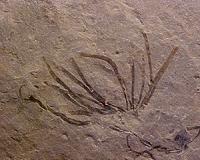 |
Zurich, Switzerland (SPX) Feb 04, 2011 Many plants produce toxic chemicals to protect themselves against plant-eating animals, and many flowering plants have evolved flower structures that prevent pollinators such as bees from taking too much pollen. Now ecologists have produced experimental evidence that flowering plants might also use chemical defences to protect their pollen from some bees. In an elegant experiment, Claudio Sedivy and colleagues from ETH Zurich in Switzerland collected pollen from four plant species - buttercup, viper's bugloss, wild mustard and tansy - using an ingenious method. Instead of themselves collecting pollen from plants, the researchers let bees do the leg work, harvesting pollen from the nests of specialist bees which only feed on one type of plant. They then fed the pollen from each of the four plants to different broods of the larvae of two closely-related generalist species of mason bee (Osmia bicornis and Osmia cornuta) to see how well the larvae developed. They found that despite the fact that the two generalist mason bees have a wide diet of different pollens, they showed striking differences in their ability to develop on pollen from the same plant species. According to Claudio Sedivy: "While the larvae of Osmia cornuta were able to develop on viper's bugloss pollen, more than 90% died within days on buttercup pollen. Amazingly, the situation was exactly the opposite with the larvae of Osmia bicornis. And both bee species performed well on wild mustard pollen, while neither managed to develop on tansy pollen." "As far as we know, this is the first clear experimental evidence that bees need physiological adaptations to cope with the unfavourable chemical properties of certain pollen," he says. Plants would have good reason to protect their pollen against bees. Bees need enormous amounts of pollen to feed their young, pollen that could otherwise be used by the plants for pollination. The pollen of up to several hundred flowers is needed to rear one single larva, and bees are very efficient gatherers of pollen, often taking 70-90% of a flower's pollen in one visit. Because they store this pollen in special hairbrushes or in their gut, this means the pollen is not used to pollinate the flower. Sedivy explains: "Bees and plants have conflicting interests when it comes to pollen. While most plants offer nectar to visiting insects as a bait for insects to transport the pollen from flower to flower, bees are very efficient pollen collectors. Therefore, plants have evolved a great variety of morphological adaptations to impede bees from depleting all their pollen. This study provides strong evidence that pollen chemistry might be at least as important as flower morphology to constrain pollen loss to bees."
Share This Article With Planet Earth
Related Links ETH Zurich in Switzerland Darwin Today At TerraDaily.com
 Putting The Dead To Work For Conservation Biology
Putting The Dead To Work For Conservation BiologyIthaca NY (SPX) Jan 21, 2011 Conservation paleobiologists-scientists who use the fossil record to understand the evolutionary and ecological responses of present-day species to changes in their environment - are putting the dead to work. A new review of the research in this emerging field provides examples of how the fossil record can help assess environmental impact, predict which species will be most vulnerable to e ... read more |
|
| The content herein, unless otherwise known to be public domain, are Copyright 1995-2010 - SpaceDaily. AFP and UPI Wire Stories are copyright Agence France-Presse and United Press International. ESA Portal Reports are copyright European Space Agency. All NASA sourced material is public domain. Additional copyrights may apply in whole or part to other bona fide parties. Advertising does not imply endorsement,agreement or approval of any opinions, statements or information provided by SpaceDaily on any Web page published or hosted by SpaceDaily. Privacy Statement |